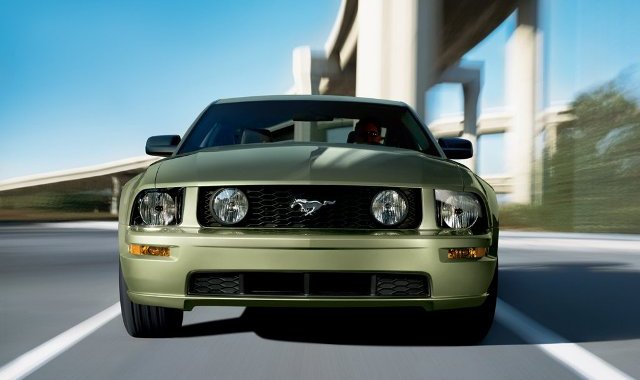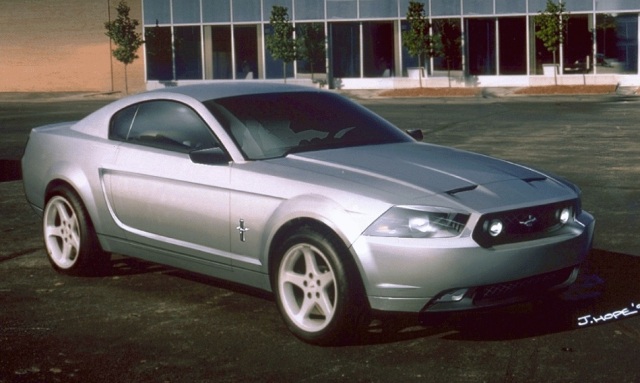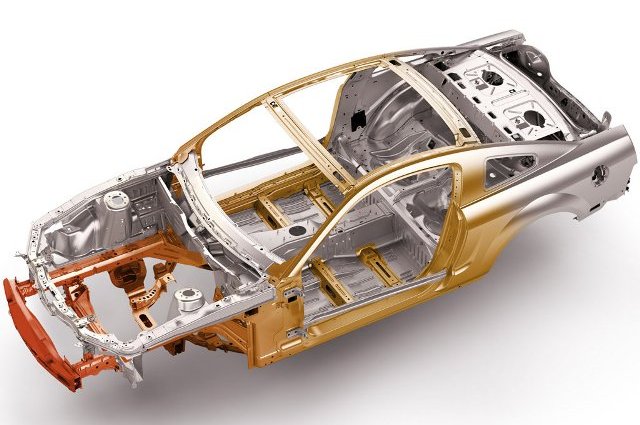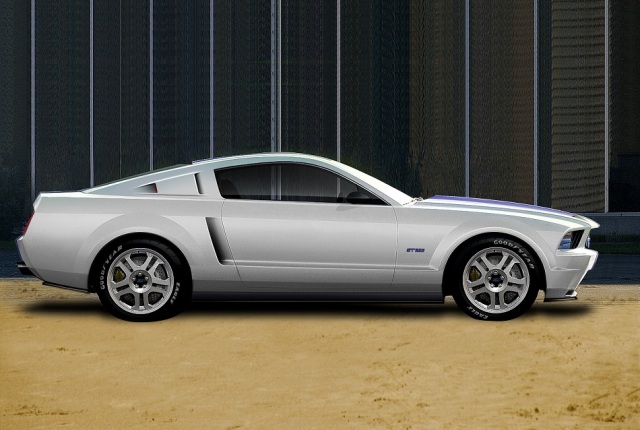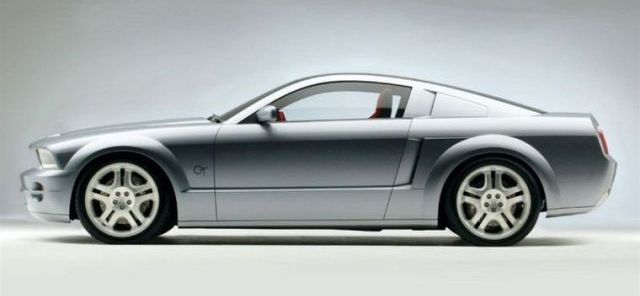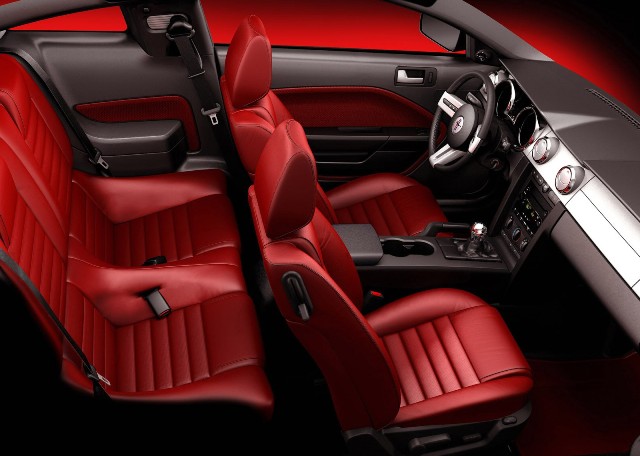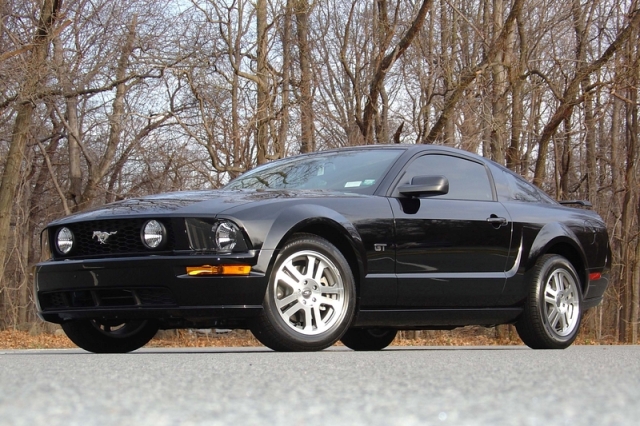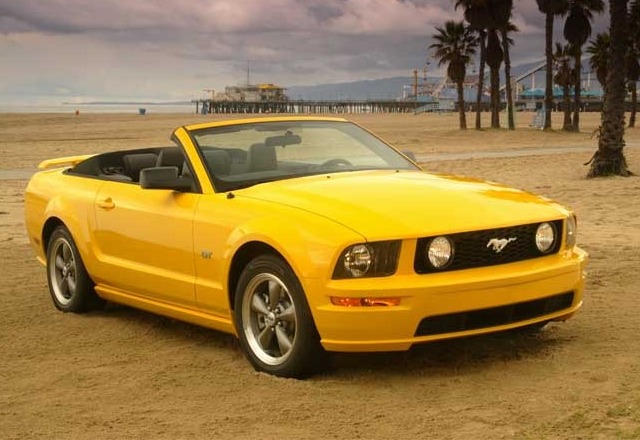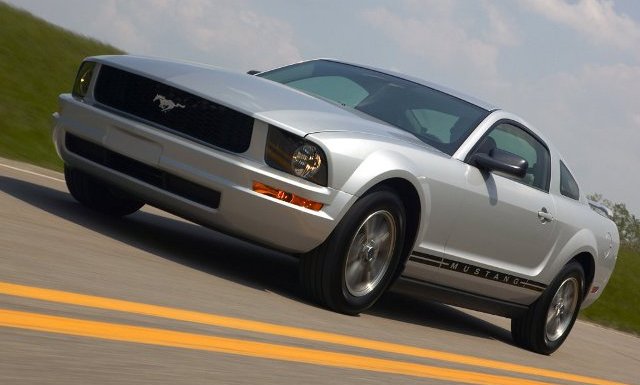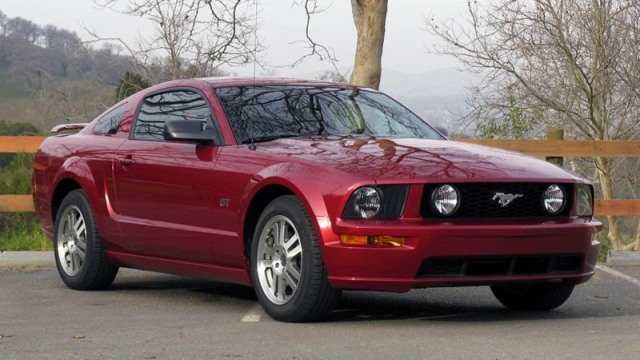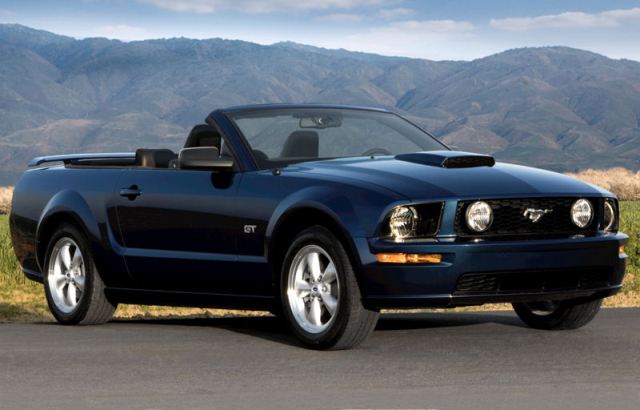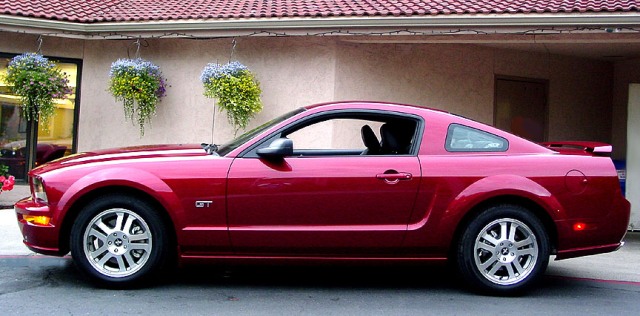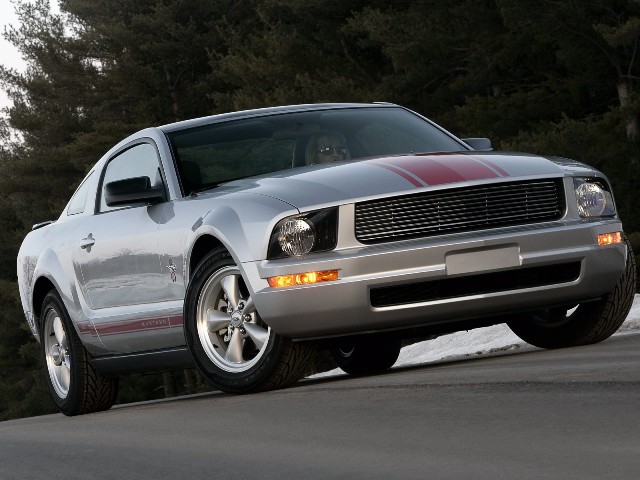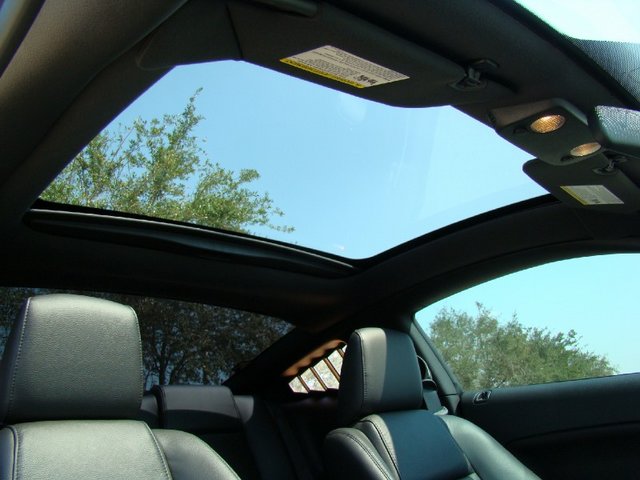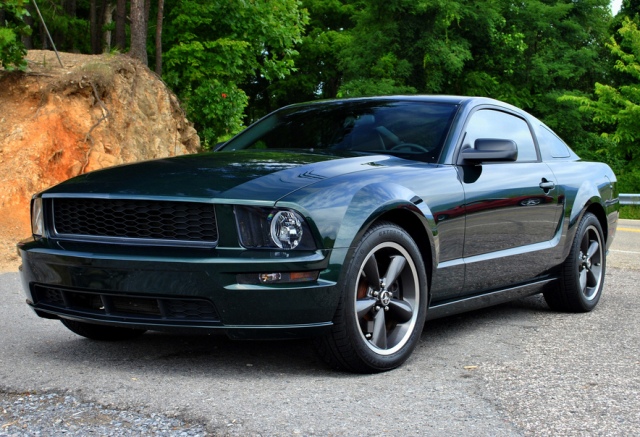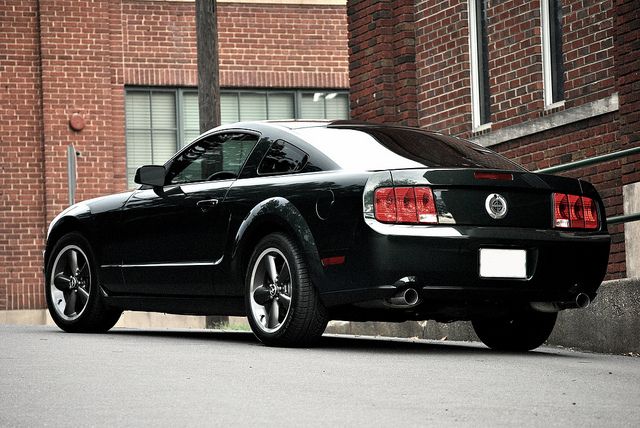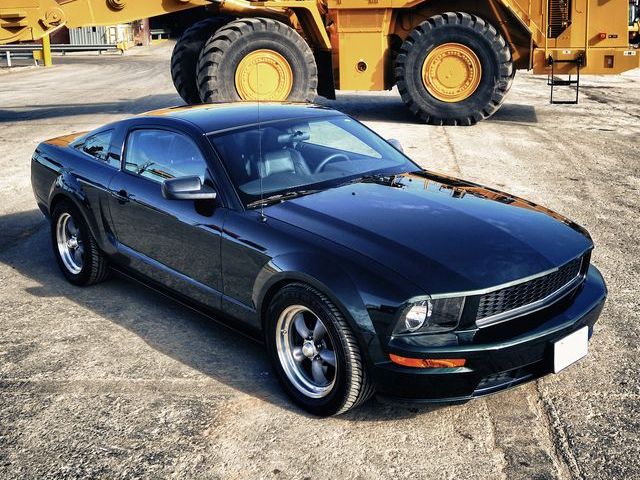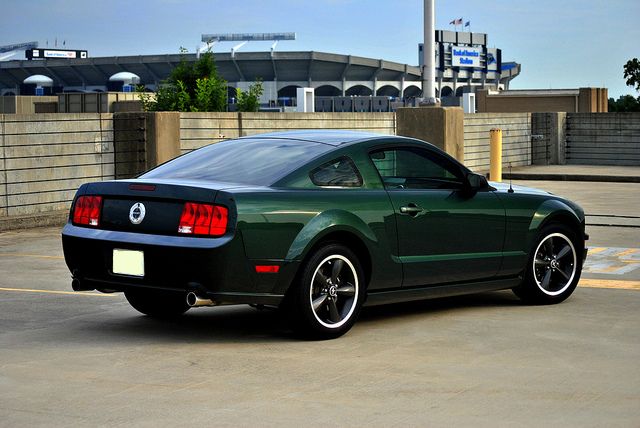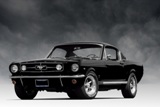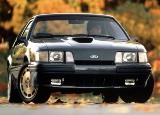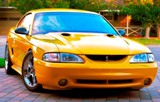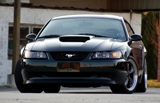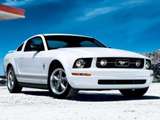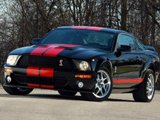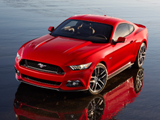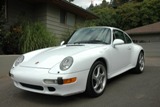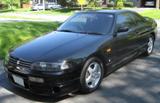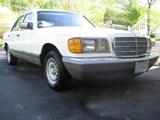Enthusiast's Corner
2005-2009 Ford Mustang: A modern rendition of an American icon
Written by James Dolan
Anytime the Mustang is due for a redesign it’s a time fraught with anxiety and stress for both those within Ford Motor Company and with enthusiasts as well. After all, the Mustang is one of Ford’s most recognized products and a deep source of pride within the company; it is also an American icon that has become a symbol for a nation. Top that off with 8 million Mustang fans who are more than willing voice their displeasure if the car does not meet expectation and you have a daunting task on your hands. Everyone knows what a Mustang is and this makes designing a new Mustang all that more of a challenge.
Although the New Edge Mustang was only five years old, below the surface the car was riding on an ancient platform dating back to 1979. After 25 years the Mustang was overdue for a full redesign and total re-think. A new Mustang had to appeal to aging baby boomers who wanted a car in which they could relive their past, yet the car still needed to be trendy enough to appeal to the later generations of Mustang fans who grew up knowing and loving the modern Mustangs. Combining design elements from the past with a modern vehicle can ether be a huge success or unmitigated disaster. Thankfully Ford had just the man on staff that was capable of designing a modern car that balanced retro touches with a modern feel and that man was J Mays.
Before joining Ford in 1997 as Design Group Vice President, J Mays was chief designer at the Volkswagen of America Design Center in Simi Valley, California. While there he headed design of the Volkswagen Concept 1 concept car project that was a modern interpretation of the Beetle; so Mays had some successful experience with modernizing design themes from the past. Mays has a philosophy that anything old can be new again and that heritage can play an important role in modern automotive design. The Mustang was just the car that required Mays modern, retro touch.
Never before had a Mustang received so much scrutiny during its design and development process. Designers had to first determine what elements of a Mustang made it a Mustang. Having a long hood and short deck was obvious; but what generation Mustang was the most recognizable or evoked the most emotion from people? Every design generation from the ‘60’s and ‘70’s right up to the modern Mustang were picked apart and studied.
Eventually designers narrowed down that the ’64 ½-’70 Mustangs evoked the most emotion, particularly the cars from 1967-1970. Designers figured that if they could successfully blend the design elements from the early cars such as the fastback roofline and shark like nose of the 69-70 cars with the C-side scoops from the ‘65, the dash from the ’67 and the quarter windows from the GT350 and blended these together with the modern themes such as overt flares, trapezoidal grille and aggressive stance from the new edge cars they would have a winner on their hands.
Initially two design themes emerged. One was an evolution of the 1999-2004 Mustang; the other was a modern interpretation of vintage Mustang elements. From the beginning the vintage inspired Mustang showed promise and it was decided that designers would hone that design into what would eventually become the 2005 Mustang.
While the stylist were busy penning a new look for the Mustang, engineers were hard at work developing the Mustangs mechanicals and body structure. Without a doubt it was time for the Mustang to move away from the Fox architecture. By 2004 the Fox platform had reached its practical developmental limits and was simply too old and would be too cost prohibitive to properly modernize. This gave engineers an opportunity to finally bring the Mustang into the 21st century as far as ride, handling, NVH and ergonomics were concerned.
However, this new Mustang still had to be affordable to build for Ford and inexpensive for consumers to purchase. To keep costs low Mustangs have historically been based on the platforms of other Ford mass produced vehicles and in the past this has worked out extremely well. Naturally the Mustang’s engineering team, headed by Hau Tai-Tang, looked into using an existing Ford platform to base the new car on. For Tai-Tang the obvious choice was to base the new car on Ford’s DEW98 rear-wheel drive platform.

2005 Ford Mustang clay concept that is very close to the production version.
The DEW98 was co-developed with Jaguar and was used for the Jaguar S-type sedan, Lincoln LS and a shortened version used for the 2002 Ford Thunderbird. Tai-Tang had intimate knowledge of the DEW98 platform since he had been vehicle engineering manager for the LS, so it seemed like a natural fit for the Mustang. However after a month studying the DEW98 platform the Mustang engineers quickly realized that it just didn’t make sense to use it for the Mustang.
There were several reasons why the DEW98 would not work for a Mustang. Engineers found that the large overhead-cam engines used in the Mustang were wider than the small displacement V-8’s used in the DEW vehicles and would not easily fit into the platform on the production line. This was especially evident when the high performance twin-cam modular engine is considered. The problem was that the front frame rails and suspension was just to narrow to allow the modular motors to slip into the chassis from underneath and this was essential for the Mustang to able to run along the production line efficiently.
Another issue was body structure. The DEW was developed for use as a passenger sedan and as such it performed quite admirably. It could have easily been adapted for use as a coupe however it was never intended to be used for a convertible body style, something that was essential for a Mustang. Although the 2002 Thunderbird was a convertible it rode on a shortened wheelbase and used a large bulkhead just aft of the front passenger seats to regain torsional rigidity. This wouldn’t be practical for a Mustang since it needed the extra wheelbase and the room that the bulkhead would take up for a rear seat.
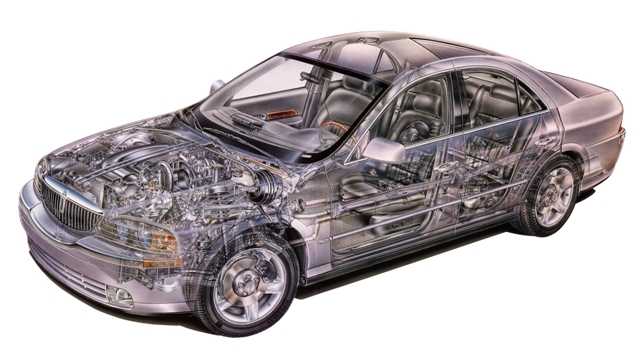
Ford considered using the DEW98 platform from the Lincoln LS for the new Mustang
Costs were also an issue. The DEW used an independent rear suspension that was fine for a high end Mustang such as a Cobra but was costlier to build than a solid rear axle suspension that would be used on lesser cars. The chassis needed to have the flexibility to accept both suspension types without extensive modifications and engineers weren’t confident that hey could achieve this goal with the DEW structure.
When everything was considered Tai-Tang and his engineers determined that for the first time in its history the Mustang would have to have a platform of its own. The side benefit to this was that engineers would have to deal with the compromises that had restricted Mustang engineers of the past. For the first time engineers would be able to build a Mustang that better met the expectation of stylists, management and more importantly the buying public.
The Mustang’s new platform would be dubbed the S197 with “S” for sporty and 197 was the car’s number in Ford’s product cycle. Although the S197 is considered an all new platform engineers did use some components from the DEW98 platform as a base. The central floorpan, portions of the transmission tunnel, front frame rails, fuel tank and parts of the front crossmember were all patterned after those on the DEW98 platform. Everything else was all new and exclusive to the S197.
Compared to the previous Mustang, the 2005 model was a much larger car. The wheelbase grew to 107.1-inches from 101.3, this was done to increase passenger space and improve ride quality. Most of the increase in the wheelbase was gained by cutting the font overhang and moving the front wheels forward. This not only made the car look better but also aided the vehicle dynamics by moving the front weight balance rearward resulting in a better handling car. Overall, the car was 4.4-inches longer, 0.8-inches wider and 1.4-inches taller. This increase in size directly benefitted interior space, an area that was a weakness of the previous Mustang.
The 2005 Mustang was not only going to be made larger, it was also going to be a solid car. Body stiffness was increased dramatically over the Fox-4 platform. For 2005 coupes were 31 percent stiffer and convertibles were 100 percent stiffer. To achieve this, engineers spent a lot of time ensuring that the longitudinal areas below the doors were extremely robust as these are the areas that have the most stress when a vehicle is being driven aggressively or over rough roads. This is especially true for the convertible. To further improve stiffness and lower NVH engineers made use of high strength steel for the Mustang’s body shell.
As work was progressing on the S197platform stylists were busy finalizing the styling of the 2005 Mustang. Every line, curve and crease was painstakingly studied, analyzed and reviewed. Designers were very careful not to over emphasize certain elements of the car and careful not to make the car look like a cartoonish caricature. Areas that had been emphasized on past Mustang’s such as the C-shaped bodyside scallop were toned down on the 2005. The new car was also devoid of any scoops or nonfunctional vents.
Designers had a less is more approach with this Mustang; they wanted the ’05 to be pure and timeless yet still be recognized as a Mustang. This approach also allowed for future special editions of the car to have scoops and vents added to differentiate the car from the standard models if needed. There was even a debate regarding offering a rear spoiler however the marketing department demanded that a spoiler be standard on the GT because that is what customers demanded. Both sides compromised and the V-6 Mustang would have a spoiler as an option and GT buyers could delete the rear spoiler if so desired. Overall the design of the 2005 Mustang is very clean and smooth looking good in either base or GT trim.
The front of the 2005 Mustang featured a forward-slanting shark-like nose, a large trapezoidal egg crate grille with a large running horse that was font and centre. GT models had large round fog lights mounted within the grille area paying homage to the front end look of the ’69 Mustang with its high beam lamps mounted within the grille. Although the outboard headlights were flush mounted they had the appearance of round units sunken into the bodywork with black painted housings giving the nose the distinctive appearance of a late 60’s Mustang. Wraparound turn signals/parking lamps were integrated to the front bumper for a clean look. The long hood had a slight dome to it in order to clear the engine.
It was the side profile of the 2005 Mustang that really revoked images from the past. The fastback roofline appeared to be lifted directly from the ’67-’68 Mustang arching back and flowing into the short deck. Triangular rear quarter windows that look similar to those used on the 1966 Shelby GT350 were added to the C-pillar to aid the driver’s vision and cut down on blind spots. The lower half of the body work was thoroughly modern with beefy fender flairs that had been inspired by the flares on the previous generation New Edge Mustang.
Although the S197 Mustang didn’t have any side scoops initially, there was a hint of side scoops from the past with a lower body line that ran from the front flares all the way back past the rear door and kicked up in a hockey stick shape and quickly faded away into the rear quarter panel. One area of practical improvement over the pervious car with the new design was the fuel filler was relocated to a more convenient position on the left side of the car from the right side.
At the rear the S197 Mustang wore a large set of triple lens taillights housed in a reassessed panel with a large round medallion in the middle to evoke the centre-mounted fuel filler that had been used on Mustang’s from 1964.5 to 1973. The rear decklid housed the mandatory third brake light and was also home to subtle rear spoiler that was standard on GT models and optional on V-6 cars.
To the casual observer the 2005 Mustang may look like a modern copy of a 1967-’68 Mustang fastback however when parked next to one of it’s siblings from the ‘60’s the differences are quite apparent. For one thing the newer car is much bigger, almost dwarfing the classic. While the overall design may evoke memories of the old Mustangs from the past the 2005 Mustang was very much its own car with a very clean uncluttered look with none of the non-functional tack on items that have plagued past Mustangs, including the cars from the ‘60’s. It’s a wonderful blend of shapes from the past mixed with some modern Mustang muscle, the entire car just looks “right” in either base trim or fully optioned GT.
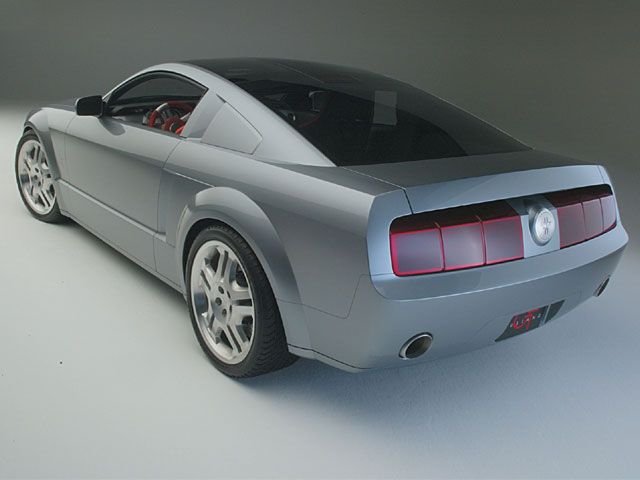
2005 Ford Mustang concept with full with tail lamps that never saw production.
Inside, the new S197 body architecture opened up a whole new world of possibilities for interior stylists. Finally many of the ergonomic idiosyncrasies such as a compromised driving position and control placement that had plagued SN95 Mustang could be rectified. Armed with the S197’s new cockpit dimensions dedicated to the Mustang and 21st century computer aided design imaging, stylists had a blank canvas to work with. Interior room for front and rear passengers grew and trunk volume increased by a healthy 13 percent.
First goal for the interior styling team was to optimize the seating position of the driver in relation to the shifter, pedals and steering wheel of the car. This was a built-in fault of the previous Fox/Fox4 platform cars and a major complaint of owners. If you have ever driven a Fox body or SN95 Mustang you will immediately know the issues. The pedal placement was all wrong and the driver sat much too high, almost perched up in the cockpit rather than in it. The steering wheel was way to close to the driver and the shifter much too far causing the driver to have to reach for first, third and fifth gears. To say the least it wasn’t a very driver friendly environment and I haven’t even mentioned the odd placement of some of the secondary controls. With the 2005 Mustang all these concerns would be a distant memory.
With the placement of the primary controls properly laid out designers then focused on the arraignment of the secondary controls. Power seat switches were moved from the front of the seat to the side addressing a major complaint of owners of the previous car. Switches were moved and improved; the headlight switch was finally a modern rotary control replacing the old fashioned pull/push unit that had been used in Mustangs since the beginning of time. The turn signal/headlamp dimmer stalk was revised and location optimized and the wiper function was moved to its very own stalk on the opposite side of the steering column where it belongs. Better yet air flow through the heating and ventilation was also greatly improved.
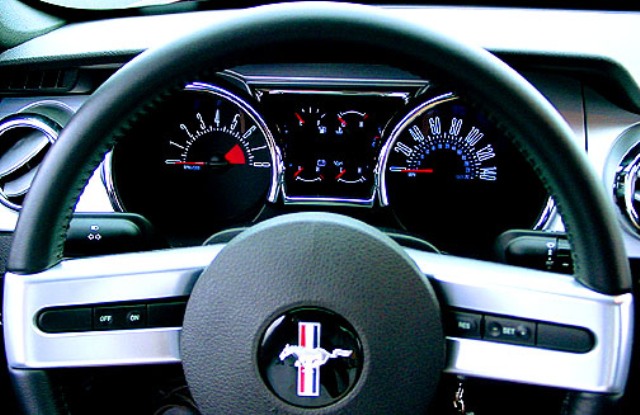
The 2005 Mustang instrument cluster was a modern interpretation of the 1967-1968 Mustang.
While stylists were busy optimizing the Mustang’s interior and bringing the ergonomics inline with the 21st century they also managed to give the 2005 Mustang an old school look. Open the door of the S197 Mustang and you will see that the retro theme of the exterior continued right on to the interior. Where the exterior took inspiration from various Mustangs from the past, the interior was heavily influenced by the look of the 1967-1968 Mustang. The twin cockpit dash returned once again but this time it looked like it had directly evolved from the earlier cars rather than a stylist’s interpretation. It was thoroughly modern in function yet still a classic Mustang design.
On the surface the double-barrel gauges with classic 60’s style typeface appeared to be lifted from the classic Mustang however they were very modern electronic units with a digital display for odometer and trip meter displays. These classic looking gauges also had a very modern trick up their sleeve. When the interior upgrade package was ordered, part of the option group was a colour-configurable gauge cluster called MyColor. The driver could select from 125 available hues to suit their individual taste or mood. It worked by blending the colours from red, green and blue light-emitting-diodes. Each of the 125 colour choices would adjust the LEDs to create a spectrum of oranges, whites, purples and grays. The colours were broadcast on the backs of the gauges leaving the etched on markings and numbers to let the desired shade of light shine through. Although this feature was slightly gimmicky it did get a lot of attention and added even more fun to the Mustang’s character.
Along with the funky colour shifting gauges the Interior Upgrade Package also included satin aluminum-finish instrument panel appliqué, leather wrapped steering wheel with satin aluminum spokes, satin aluminum-plated shift lever with automatic transmission or a leather wrapped sport shift knob with manual transmission, bright polished air vent register rings, satin aluminum plated door handles, satin aluminum door sill scuff plates with MUSTANG lettering insert, bright polished instrument bezel and dark Charcoal Aberdeen front door panel inserts. And finally a three button message centre that displayed trip and fuel consumption readouts within the speedometer. It was within the menu of the message centre that the MyColor selections could be made.
If you wanted even more interior flash for your Mustang after you order the Interior Upgrade Package you could also order the eye catching Interior Color Accent Package that came with red leather front and rear seating surfaces with red door trim inserts and floor mats. This package could only be had with Dark Charcoal interior trim.
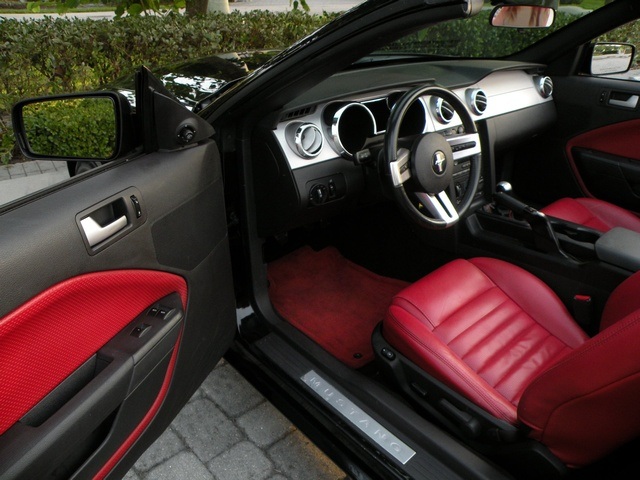
Mustang Interior Color Accent Package
For those who didn’t want all the flash a basic Interior Sport Appearance Package was available that included such niceties as a leather wrapped steering wheel with satin aluminum spokes, satin aluminum-plated shift lever with the automatic or a leather-wrapped sport shift knob with the manual transmission. From mild to wild Ford seemed to have an interior package to suit just about every driver and the same could be said about the available audio systems.
Just as great styling and sporty image have always played a large part in the appeal of past Mustangs great sounding audio systems that could really pound out the tunes had become just as important to Mustang buyers and Ford didn’t disappoint. Standard equipment was a premium AM/FM stereo with single CD player and digital clock. Buyers could upgrade to the Shaker 500 Audio System that included and AM/FM stereo with 6-disc in dash CD changer with MP3 capability and 8-speakers. For the real audiophile the Shaker 1000 Audi System was available to deafen those who chose to opt for it. This system included an AM/FM stereo with 6-disc in dash CD changer with MP3 capability and 10 Audiophile speakers that included an 11-litre subwoofer in the trunk!
Overall, the inside of the 2005 Mustang was not only a feast for the eyes with all its beautiful detail and retro touches it was also a nice place to ride in. Interior storage space was increased, the driving position and switchgear was vastly improved, the seats were more comfortable and the materials were upgraded. This was a car that you not only wanted to spend a lot of time in; you could spend a long time in and be very comfortable along your journey. And to get you to where you were going the 2005 had a pair of new power-plants under the hood.
The base Mustang did away with the wheezy 3.8-litre overhead valve V-6 in favor of Ford’s more powerful and freer revving 4.0-litre single overhead cam “Cologne” V-6 that had been introduced in the Ford Explorer in 1997. This new engine used a 60-degree cast iron block with a 3.94-inch bore and 3.3-inch stroke. This overhead cam engine was based on the rugged 4.0-litre “Cologne” overhead valve V-6 and therefore shared the same engine block.
Ford used a clever timing chain system to drive the camshafts in each cylinder head. A jackshaft was installed in place of where the cam resided in the overhead valve version of the engine. This jackshaft was used to drive the camshafts in the left and right cylinder heads. The timing chain for the left bank was located in the front of the engine while the chain driving the right side cam was located at the rear of the engine and a third chain at the front of the engine connected the jackshaft the crankshaft.
For Mustang duty the V-6 was treated to a unique camshaft grind, tuned exhaust manifolds, new flywheel and oil pan. Topping of the V-6 was a variable intake manifold and an electronic drive-by-wire throttle control; giving the V-6 excellent response as well as great power and flexibility over the entire rev range. In the Mustang, the V-6 produced a healthy 210-horsepower and 240 pound-feet of torque, enough power to nearly match the output of the V-8 Mustang GT from 10 years earlier!
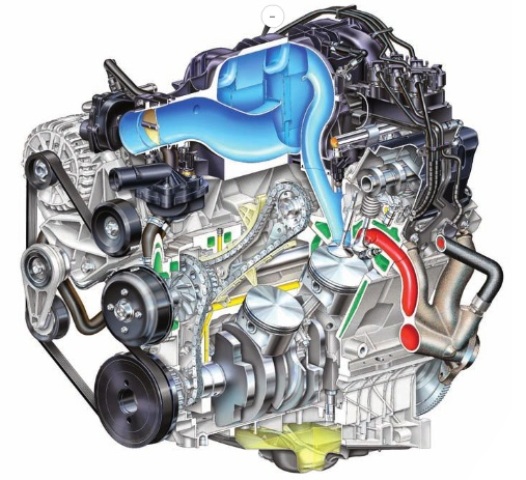
2005 Mustang 4.0 SOHC V-6 engine
While the 2005 Mustang V-6 didn’t sound as sultry as a V-8 powered Mustang it did have very respectable performance capable of pushing the car to 60 miles an hour in less than seven seconds. It was also a big improvement in the area of refinement, running smoother and quieter than any six-cylinder Mustang in recent memory. For the first time in the car’s history a Mustang with the base engine was no longer a wheezy, unrefined, underpowered penalty box of a car to drive, it was actually a viable alternative to the V-8 for people who didn’t need or want the V-8 but still wanted a fun car that was smooth and had some kick.
While the six-cylinder powered S197 Mustang was a fine car the real excitement was under the hood of the new 2005 Mustang GT where a new and improved V-8 was housed. While the modular V-8 still displaced 4.6-litres, the engine block was now cast out of lighter aluminum rather than iron; saving 75-pounds and featured a deep skirt for added strength. Inside the block was a set of short skirt aluminum pistons with an antifriction coating and wrapped with high-tension piston rings for longer life and better oil control. Once again, the cracked-powdered-metal connecting rods were used after proving their durability in past modular motor Mustangs.
Bolted to the top of the aluminum block was a pair of new cylinder heads that were taken from the 5.4-litre Triton truck engine. These aluminum three valve-per-cylinder heads allowed the engine to breath better at high engine speeds since they allowed the incoming air a more direct, port-style path to the two intake valves. The new heads allowed engineers to raise the compression ratio to 9.8:1 while still being able to safely run on regular grade fuel. Operating the valves was the camshaft lifted directly from the 5.4 Triton engine along with another innovation that was a first for any Mustang; Variable Camshaft Timing.

2005 Mustang 4.6 SOHC 3-valve V-8 engine
Variable Camshaft Timing (VCT) allows for better engine performance, increased fuel efficiency and reduced emissions by electronically adjusting the camshaft timing. The system works by directing high pressure oil through electronically controlled hydraulic valves into the camshaft phaser cavity. When the Powertrain Control Module (PCM) requires a change in cam timing, depending on factors such as engine load and RPM, it will send a signal to the hydraulic valves to regulate oil flow to the phaser cavity. This in turn causes the camshaft to rotate slightly from its initial orientation thus resulting in the camshaft timing being advanced or retarded depending on the needs of the PCM. Since the Mustang employed a single overhead cam design the VCT system operated both the intake and exhaust valves simultaneously.
Crowning the improved V-8 was an all new intake system featuring an intake manifold with tuned runners. At the end of these runners was another new feature to the Mustang called a charge motion valve. These flaps would close at light loads and low engine speeds causing the air entering the engine to speed up and induce a tumble effect in the combustion chamber allowing fuel and air to mix more thoroughly and burn efficiently. When the driver put their foot down on the accelerator and engine speeds rose or when under heavy loads these flaps would then open fully allowing maximum air flow into the combustion chamber. Throttle control on the V-8 was controlled electronically just as it was with the 4.0-litre V-6.
The reworked V-8 exhaled through a pair of new tuned exhaust manifolds. Attached to the exhaust manifolds was a 2.5-inch mandrel bent stainless steel dual exhaust system that ran all the way back to a pair of mufflers mounted at the rear just before the rear bumper.
Power in the Mustang GT grew to 300-horsepower and 320 pound-feet of torque representing a new benchmark in horsepower for the GT. For the first time in history a Mustang GT equipped with the base V-8 engine surpassed the 300-horsepower barrier. While Mustangs with 300-plus horsepower engines was nothing new, those engines were often in higher priced cars such as Mach 1’s, Boss’s or Cobras. Now the owner of a GT actually had some real kick-ass performance under the hood and the pricing of the GT made it an even better performance value as no other vehicle could touch a Mustang GT in the category of horsepower per-dollar.
Both engines were mounted to the vehicle with new hydraulic engine mounts that prevent any unwanted vibrations from entering the cabin.
Transferring power back to the rear wheels was handled by a pair of five speed manual transmissions as standard equipment on both the base V-6 and GT V-8. The V-6 received a Tremec T-5 while the Tremec 3650 gearbox was used once again in the GT. Both transmissions had revised gearshift linkages to improve shift response and feel.
Also new was a hydraulic actuated clutch that greatly reduced the pedal pressure required to engage and disengage. This also reduced maintenance as the new system was self adjusting and eliminated the possibility of being stranded on the side of the road with a broken clutch cable. While they were at it engineers also specified new clutch disc materials in the V-6 cars for better durability and the V-8’s got a larger clutch assembly in order to handle the increase in power.
For those who weren’t thrilled with the prospect of three pedal driving an all new automatic transmission was optional in both the V-6 and V-8. Lifted from the Ford Thunderbird and Lincoln LS the Ford-built 5R55S transmission was a smooth shifting 5-speed unit that brought new levels of civility and performance never before seen in a self shifting Mustang. This sophisticated transmission featured a direct-drive fourth gear and overdrive fifth allowing engineers to use closer spaced gear ratios for better acceleration while still being able to attain decent fuel mileage on the highway.
A power-train computer controlled shift timing and duration with the capability of communicating with transmission 10 times faster than before. This allowed power-train engineers to better match the transmission shift characteristics with the new electronic throttle controls and the VCT on the V-8 engine. The result was Mustang that could accelerate aggressively when the driver desired or could cruise around offering buttery smooth, seamless shifts that are barely perceptible to the driver.
A new two-piece driveshaft was employed to get the power rearward in the GT’s while the V-6’s made due with a slip-in tube style driveshaft.
Final drive ratios were revised for all models. Mustang GT’s with a manual gearbox received a 3.55:1 radio that had previously been reserved for the Mach 1 while all other Mustangs were equipped with a 3.31:1 gear ratio. GT’s also had the added benefit of using the stronger 8.8-inch ring and pinion gears with Traction-Loc limited-slip. Base Mustangs used a 7.5-inch rear axle with an open differential.
Traction control was available once again however now the system was more sophisticated. The system used in the S197 was now able to activate at all speeds. It was also able to determine if the car was driving on dry pavement or a slippery surface. If the system sensed that the car was driving on a slippery surface it acted more aggressively to help the driver maintain control. However if the car was on dry pavement the system would allow for more wheel slippage, even in turns to give the car more of a performance driving experience. Just like on the SN95 New Edge Mustang the traction control would be automatically activated when the vehicle was started however it could be turned off and back on with a push of a dash mounted button. The system was standard on the GT and was available as a package that included anti-lock brakes on V-6 models.
Hiding beneath the S197’s new architecture was an all new suspension system that would finally rid engineers of the compromises that had to be made with the old Fox/Fox-4 platform and suspension used in the past. Up front chassis engineers took inspiration from BMW and its fabulous M3. Lighter springs were mounted around the MacPherson struts allowing engineers more precision when tuning the shock valving. The lower suspension was located via unique L-shaped control arms. What made these control arms so unique was how they were made. Engineers managed to come up with a ground breaking new technology to manufacture these control arms out of less expensive steel yet were super strong and weighed less than comparable cast-aluminum designs.
Bushing selection was a key element to how the new L-shaped control arm performed. Firm bushings were used to locate the forward leg of the L-arm to the body structure. This quickened steering response and helped control the side to side motions of the arm under loads. A softer bushing was installed on the rear leg of the arm and this helped quell the transmission of unwanted road shocks to the body. An anti-roll bar was installed to limit body roll. A 34mm bar was used on the GT while the Base V-6 had a smaller 28.6mm bar. The system was simple yet it went a long way to improving the Mustang’s ride quality and handling response all at the same time.
At the rear a solid rear axle was once again chosen much to the surprise of many enthusiasts. Rumors had persisted that the S197 would have an independent rear suspension similar to that used on the Lincoln LS and Thunderbird. After much debate and input from hardcore Mustang enthusiasts engineers choose to go with the solid axle as it was deemed to better suit the Mustang’s character. It was also the preferred choice of the amateur drag racing crowd and was cheaper to build. For those Mustang enthusiasts (such as myself) who longed for an independent set-up and were disappointed, Ford promised an upper level Mustang equipped with IRS for the future.
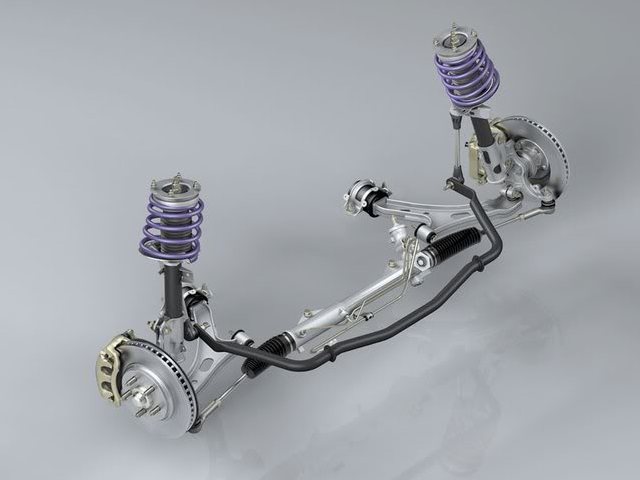
2005 Mustang front suspension was completely revised.
While a solid rear axle suspension may seem like a step back the design that engineers came up with was quite well designed and worked very well. The four link, Quadra-shock rear suspension from the SN95/Fox-4 was tossed out in favor of a new computer optimized design. While perfectly acceptable for a late 70’s, low powered sedan, the rear axle design from the previous generation Mustang just wasn’t capable of providing the ride and handling characteristics of a modern performance vehicle. In other words it had reached its practical design limits. With the S197 engineers would not be constrained by being forced to use a system that had been designed for another purpose; they had a clean sheet of paper.
A pair of outboard mounted lower control arms regulated the fore/aft motions of the rear axle as it road over bumps. A third, shorter arm, called a central torque control arm, was mounted atop the differential housing. This central torque control arm was used to control axle wind-up during hard acceleration, a problem that had plagued early Fox-body Mustangs.
To control the side-to-side motions a tubular Panhard rod was installed. It was attached at one end to the axle and ran parallel to the other side of the vehicle where it was affixed to the body structure. The bushings in the Panhard rod were very firm in order to aid handling however these firm bushings did not degrade ride quality since they would not affect the motions of the three longitudinal control arms that affected the ride.
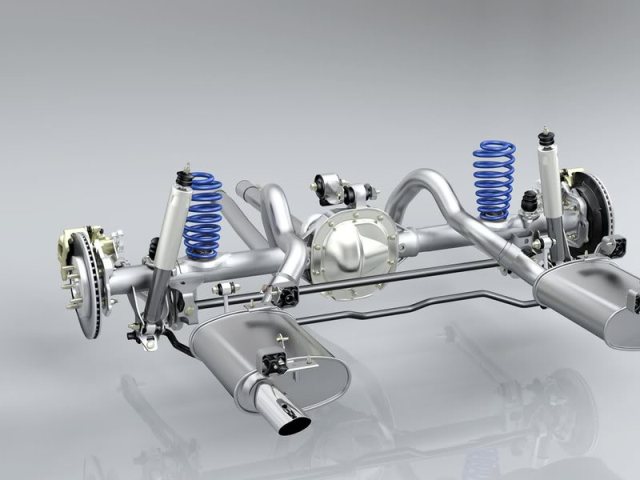
Surprisingly the S197 Mustang rode on a solid axle rear suspension rather than the expect IRS.
The shock absorbers were mounted outside the rear structural rails and the softer springs were now located on top of the axle. Doing this allowed for the use of softer shock valving and resulted in better ride control along with better handling. For added handling prowess the GT was equipped with a 20mm rear anti-roll bar.
On the road this new suspension system was a giant leap forward for both ride and handling of the Mustang. Not only did the car ride better, it handled better too!
Along with the new suspension came all new wheel and tire packages. Base model V-6 Mustangs came with a very retro looking set of 16x7-inch 10 spoke alloys fit with P215/65R16 BF Goodrich Traction T/A tires. Upper level V-6 cars added a decorative spinner centre cap that added to the 2005 Mustang’s ‘60’s vibe.
Two sets of wheels were available on the GT for 2005. Standard was a revised set of Torq-Thrust replicas that had proved to be so popular on the New Edge generation Mustang. Optional was split spoke bight machine finished alloy that replicated the look of the 2003 Mustang concept car. Both sets of wheels were 17x8-ich alloys that were wrapped with P235/55ZR17 Pirelli all-season performance tires. Tire size on GT’s actually got narrower and half an inch taller. This was done to fill out the large wheel wells of the S197 enhancing the 2005 Mustang’s muscular looks. Chassis engineers also wanted a balanced ride and handling feel and chose the narrower and taller tire to enhance ride comfort.
Behind the new wheels was a new braking system with disc brakes at all four corners. Up front V-6’s got 11.5-inch ventilated rotors that were 30mm thick. The GT was outfitted with aluminum dual piston floating calipers clamping on a large 12.4-inch ventilated disc that was also 30mm thick. At the rear both the GT and V-6 received single piston calipers and larger 11.8-inch vented rotors. These new front and rear brakes represented the largest set of binders ever installed on a factory mainstream Mustang.
To help give the driver additional control during panic stops GT’s came equipped with a new four-channel anti-lock braking system enhanced with electronic brake force distribution. This system automatically adjusts braking pressure to the wheels that could use it more effectively thus enhancing stability and shortening stopping distances. V-6 buyers could opt for this system which was available as a package along with the Mustang’s new, highly sophisticated traction control system.
For the first time in its history the Mustang was built on its own dedicated platform allowing engineers and stylists the freedom to design Mustang free from the constraints and compromises of using architecture from another vehicle. This approach really had a positive affect on how the Mustang felt and drove going down the road. This was especially true for the convertible as its super strong structure, designed for use as a convertible from the onset felt especially solid on rough surfaces. Sure the Mustang shared many components from other Ford vehicles such as its V-6 engine and smaller items like door hinges, latches and various switch gear; however it was the S197 platform that really allowed the Mustang to grow into a mature automobile.
In late summer of 2004, just weeks after had purchased my SN95 Cobra, I was invited to sample the all new 2005 S197 Mustang at a preview before the car was released to dealers. While my Cobra would out accelerate and out maneuver the 2005 Mustang through corners it was the refinement, ergonomics, ride and comfort that really set the 2005 Mustang apart from the old car and performance was impressive. Compared to the 2004 GT the 2005 Mustang GT was in a completely different league in terms of performance.
Climbing inside the 2005 Mustang the benefits of the new S197 platform are immediately apparent. There is more leg and shoulder room and controls fall immediately and logically into hand. The cabin has a more airy feel and the look and feel of the materials is improved. Seats are vastly improved with more lateral support and offer more comfort on long journeys.
The 4.0-litre six felt strong enough to be entertaining and while it wasn’t the smoothest or sweetest sounding V-6 ever produced it was a vast improvement over the lumpy old 3.8 that was used in the previous car. For those who didn’t want the extra cost of the V-8 but still wanted to live the Mustang lifestyle, and for many the Mustang is a lifestyle, the 4.0-litre V-6 was a great engine and was the best base engine ever offered in Mustang. No longer was the base Mustang saddled with an engine that was weak and screamed “I shudda been a V-8!”
On the other hand the 4.6-litre 3-valve V-8 was a masterpiece. It was smooth and powerful, pushing the driver back into their seat when the throttle was mashed to the floor. Low end torque was improved over the previous 4.6 thanks to the new 3-valve head, Variable Cam Timing and improved intake manifold. It still didn’t have the off the line punch of some of the older overhead valve engines from the past as the Modular V-8 was still an engine that performed its best at higher engine speeds but the complaints that the 4.6 felt somewhat dead off the line were finally put to rest. The improved aluminum block V-8 had incredible flexibility with enough low end power to get the car off the line quickly and could rev very quickly and easily producing gobs of power all the way up to the engines rev limiter. From a standing start the 2005 Mustang could reach 60 mph in about 5.3-seconds, an impressive improvement for the larger, but not that much heavier car.
One of the improvements that I particularly appreciated was the actuation of the new hydraulic clutch and shifting feel of the improved transmission. Eight cylinder Mustangs have always had a reputation of having a heavy clutch that results in owner having disproportionally large left legs muscles. With the hydraulic clutch, while still firm, it was much easier to live with especially if you lived in an area with heavy traffic. And while your left leg was relieved with the lighter clutch, your right arm would be delighted with the action of the shift linkage. Never before had a Mustang had such a precise and pleasant shifting gearbox, missed third gear shifts felt as if they would be a thing of the past. Not only was the S197 manual transmission Mustang smoother and easier to drive, it was an absolute joy.
The automatic transmission was even more impressive. The 5R55S 5-speed transmission could run up and down through the gears with the buttery smoothness previously only reserved for higher end Fords and Lincolns. And when you put your foot down hard on the accelerator pedal it responded quickly with immediate downshifts giving the driver access to the Mustang’s power.
Cruising on the open road you would be hard pressed to know that the S197 Mustang GT had a solid rear axle suspension. It was smooth and composed with a ride that was firm enough to be considered sporty but not harsh or jarring even over rough surfaces where the old car would really show its age. The new rear axle design really paid off and only when pushed very hard through an uneven corner, harder then most drivers would push the Mustang, could you feel that the car had a live axle rear end.
This was by far the best handling regular production Mustang ever made. When driven aggressively grip was impressive and turn in was sharp. The car had a tendency to understeer a bit but that could be overcome with a prod of the throttle. The new platform felt extremely rigid and no body flex could be detected in the coupe at least. The new car felt so solid that it made the SN95 Mustang feel as if it had the rigidity of a wet noodle.
Steering was precise and had a good, solid feel and while not in the same league as a BMW M3 it certainly was excellent for an American car and a huge improvement. While compared to the pervious pony, the 2005 Mustang was light years ahead of the previous car; however I wish that the suspension and tires had been tuned a bit more aggressively for my own personal taste.

2008 Ford Mustang V-6 convertible Pony Package
The V-6 was even softer and was really tuned to be a boulevard cruiser as its narrow, tall all-season tires and softer springs produced a great ride but didn’t really like to be pushed very hard. This didn’t matter much as V-6 buyers didn’t buy the car for its high performance abilities anyway; this car was all about cruising down the road in comfort and looking good while doing it!
The convertible, introduced later in 2005 offered the most rigid body structure ever offered in a drop top Mustang. Cowl shake and body flex were all but eliminated, only showing up very slightly under the harshest of road conditions giving the open air Mustang structure the feel of a more expensive German made convertible.
It was clear that Ford had really stepped up their game with the S197 and they now had a car that was clearly ready to take on the 21st century. Ford also moved up their target market for the Mustang with the 2005 car. With a dedicated platform, retro looks, refinements that could rival higher end products, expanded interior space, more creature comforts, higher end materials and smoother ride and engines Ford was clearly aiming the 2005 Mustang more towards the baby boomers and away from the youth market. And for Fords part this was a brilliant move as many baby boomers have fond memories of the older cars from the 60’s and has the disposable income to buy a toy such as a new Mustang.
Right from its launch the S197 Mustang was popular, especially with people aged from 40-65 since this Mustang evoked pleasant memories from their past. It also helped that the 2005 Mustang offered the comfort and civility that these customers expect along with the kick in the pants performance that Mustangs are well known for. This combination of style, performance, refinements, comfort and relatively low price made the 2005 Mustang a raging success and Ford was going to keep that enthusiasm alive with constant changes over the S197’s life span.
2006-2009 Mustang
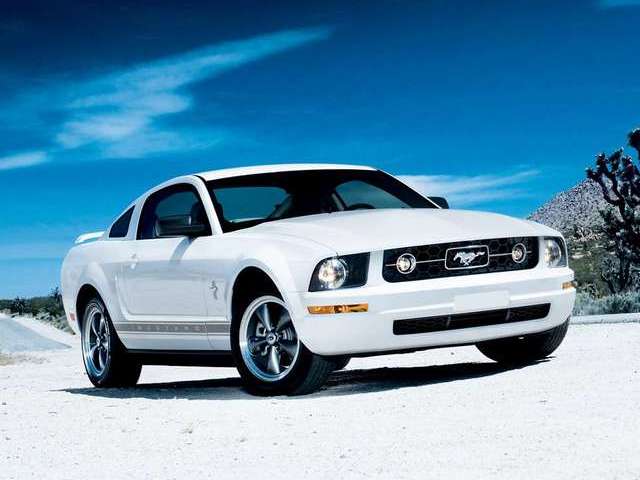
2006 Ford Mustang V-6 Pony Package
For 2006 the Mustang line-up carried on pretty much unchanged since the car had just gone through a major revision for the previous year. But this didn’t stop Ford from playing with America’s favourite pony car.
Buyers of V-6 Premium Package Mustangs had a new exciting option for 2006 enabling them to dress up their V-6 in GT trim. The Pony Package as it was called consisted of a rear spoiler, MUSTANG lower body side tape stripe and small chrome surrounded fog lamps mounted in the grille on the exterior. The suspension was upgraded with GT inspired suspension tuning with a larger front anti-roll bar and the addition of an anti-roll bar at the rear. The 16-inch alloy wheels that were standard on the V-6 were replaced with the Bullitt style 17-inch five spoke cast-aluminum wheels with gray painted spokes and polished lips. These great looking rims where shod with more aggressive P235/55ZR17 tires. This new wheel and tire package was the largest ever fitted to a six-cylinder Mustang from the factory.
The Pony Package gave the V-6 Mustang an aggressive look and went a long way to improving the handling of the base car. Fans of the six-cylinder Mustang could now rejoice as they could now get similar style and handling performance of the GT without the add costs associated with the V-8.
Not to be left out the GT now had an 18-inch wheel and tire package available as an option.
New options packages were available for 2007 and this time it was the GT that got the added attention. Buyers who wanted to dress-up their Mustang GT could opt for the GT appearance package. This package included a non-functional hood scoop, rolled chrome exhaust tips and a decorative plastic engine cover with a running horse emblem.
But the real exciting news was the addition of the California Special Edition package. Available only on GT Premium models the California Special recalled another special edition Mustang from 1968 by the same name. The exterior of the GT/CS was adorned with unique front fascia and chin spoiler that extended 1.5-inches lower than the standard GT. Body side scoops located just aft of the front doors and unique tape stripes with the GT/CS logo were affixed to the sides of the car. At the rear the GT/CS wore a unique rear bumper with an air diffuser and a pair of chrome rolled exhaust tips. The package also included a set of 18-inch Bullitt style polished-aluminum alloy wheels along with the appropriate sized rubber. Inside, the black leather seats were trimmed out with either Parchment or Dove leather inserts. If the buyer desired even more pizzazz the GT appearance package could be added to a California Special.
For 2007 all Mustangs received an auxiliary audio input jack as standard equipment. New optional equipment included front heated leather seats and Sirius satellite radio. Rounding out the changes for 2007 was the addition of Grabber Orange to the Mustangs colour palette.
Rolling into 2008 the Mustang V-6 gained a special edition package of its own with sales from this package helping raise funds for Susan G. Komen for the Cure and was aptly named the Warriors in Pink edition. Available only in Performance White, Black or Silver Metallic this special edition package was filled with unique content. The exterior of the car included the Pony Package grille and fog lamps surrounded by a chrome bezel. The tri bar running horse emblem on the front fenders was replaced with a pink ribbon and Pony badge. Pink MUSTANG stripes adorned the rocker panel and lower doors. Affixed to the top of the deck lid was a rear spoiler.
Finishing off the exterior was a set of painted 17-inch Bullitt style cast-aluminum wheels. Inside the Warriors in Pink Mustang wore Charcoal leather-trimmed seats with contrasting pink stitching. The steering wheel was upgraded to a leather trimmed aluminum spoke part with contrasting pink stitching. Rounding out the package was a set of Charcoal floor mats with pink ribbon and pink contrast stitching.
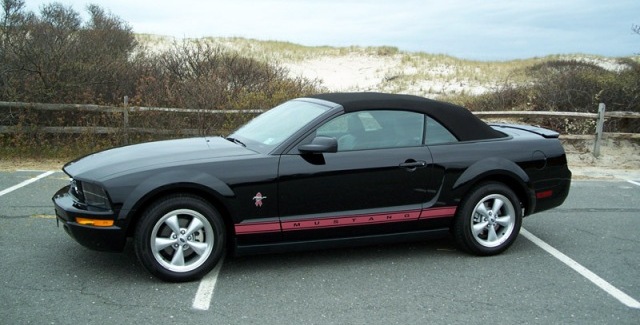
2008 Ford Mustang Warriors in Pink convertible
On the safety front all Mustangs received side airbags as standard equipment and high-intensity discharge (HID) headlamps were added to the options list along with three new colours.
Two thousand nine marked the Mustangs 45th year of production however Ford made barely any changes to the Pony car. The GT/CS, Pony Package and Warriors in Pink all continued on in 2009 with only minor detail changes.
The Mustang did offer one new cool option and that was a new factory-installed glass roof option that gave passengers a panoramic overhead view and more interior lighting. The glass roof was fixed and made out of safety glass that was tinted to protect the passengers and interior from harmful ultra violet radiation. The glass was also coated with an acoustic vinyl layer that reduced noise, vibration and harshness. If the sun got too intense a manually operated, retractable sunshade was included to shield the driver and passengers from the intensity of the sun.
2008-2009 Mustang Bullitt
When the S197 Mustang rolled out for the 2005 model year everyone just knew deep down that Ford would not be able to resist producing a special edition Bullitt based on their gorgeous new retro themed Mustang and for 2008 that’s exactly what they did. Two thousand eight was the fortieth anniversary of the movie Bullitt that featured the most iconic car chase scene ever filmed. The main character in the movie starring Steve McQueen drove a tastefully modified Highland Green 1968 Mustang GT390 2+2 fastback that roared like thunder and looked sinister. From the day that the movie Bullitt was released it cemented the reputations of both McQueen and the Mustang as the epitome of cool. No wonder Ford was eager to capture the essence of the ’68 Mustang from the movie in its latest Pony car.
Since 2008 was a milestone year since the introduction of the film it seemed fitting that Ford would mix-up some Highland Green paint and tweak Mustang to celebrate the occasion. Plus the fact that the last Bullitt inspired Mustang from 2001 was a great success probably made the decision to produce the 2008 version that much easier.
Stylists were very careful to show restraint and stay true to the original 1968 movie car. The less is more approach that had been used when styling the 2005 Mustang was taken to a new level with the Bullitt. A new black-mesh grille devoid of the chrome pony and large fog lamps was installed. The grille was accented by a satin aluminum strip that not only represented the chrome grille surround used on the 1968 Mustang GT390 in the movie but also helped frame the grille that would otherwise look like a black hole next to the proper Dark Highland Green or available Black paint.
Unique 18-inch cast-aluminum “Euroflange” wheels with charcoal satin finish spokes were installed. Adding to the low key look was Dark Argent Grey painted brake calipers that closely matched the wheel spokes. The wheels were wrapped in P235/50ZR18 BF Goodrich g-Ford T/A KDWS tires.
At the rear the 2008 Mustang Bullitt was devoid of a rear spoiler but did have a circular faux gas-cap badge that proclaimed the car to be a “Ford Bullitt”. As a matter of fact the 2008-2009 Bullitt was almost completely stripped of all its emblems save for the aforementioned rear emblem and tri-bar pony emblem on the centre caps of the wheels. The stylists were successful by creating a car that looked clean and subtle, yet sinister and mean and probably the best looking of all the 2005-2009 Mustangs.
Inside, the Bullitt was dressed in Charcoal Black leather and Satin metallic trim for visual interest. Real machined-turned aluminum instrument panel inserts brightened up the cabin and gave the Bullitt a wonderful 1960’s vibe. Satin aluminum bezels circled the gauges and air vents enhance the look even further. A machined aluminum shift ball replaced the standard leather wrapped gear knob in the Mustang GT and the shifter surround was decorated with a satin aluminum bezel of its own. Pedals wore race-inspired aluminum covers while the door sill plates were enhanced with metal pieces with “Bullitt” embossed into them. The seats were patterned after those in the Shelby GT500 and constructed using new, Ford-developed, soy-based foam that is friendlier to the environment. Finally, the steering wheel was redesigned and enhanced with palm grips and a “Bullitt” emblem on its centre hub.

2008 Ford Mustang Bullitt interior
Just like the 2001 Bullitt, the 2008’s engine was enhanced to be more responsive and produce more power. A new cold air intake system that came from Ford Racing was installed and was the first open-element air filter used in a factory produced fuel-injected Mustang. Engineers even went as far as to modify the hood liner in order to provide a full seal to the air box to ensure that the engine would be fed cool power-improving outside air. A heavier front crank damper was specified and allowed the engine to rev freer and redline at 6,500 rpm, 250 rpm higher than a stock Mustang GT.
To squeeze ever last bit of power and enhance the sound of the legendary Mustang V-8 the exhaust system was custom designed. A new H-pipe was specifically designed for the Bullitt along with all-new mufflers featuring large 3.5-inch chrome tips. While the system was tuned to minimize backpressure and maximize horsepower engineers also spent countless hours tuning the sound of the exhaust trying to mimic the sound of the 1968 movie car and getting the note just right. The result is Mustang with a throaty growl and aggressive bark when revved that will give any car lover a shiver down their spine when driven.
To fully take advantage of all the mechanical changes and give the Bullitt a little extra bite the engine calibration was designed to increase the throttle response of the electronic throttle control for a snappier feel on acceleration. The engine was further enhanced by adaptive spark control that was a new feature on the 2008 Mustang. While premium fuel was recommended in the Bullitt for optimum performance, regular fuel can be burned without damaging the engine since the adaptive spark ignition will adjust the spark accordingly. As a result of all the mechanical and electronic modifications the Bullitt produced 315 horsepower at 6,000rpm and 325 pound-feet of torque at 4,250 rpm.
Gears were selected through a Tremec TR3650 five-speed manual transmission that was specially modified with a shift kit for quicker, more precise shifts. The rear end ratio was changed from the 3.31:1 that was standard in the GT to a more aggressive 3.73:1 final drive ratio that helped launch the Bullitt with more vigor. As a result of the horsepower and gearing changes the Bullitt would sprint to 60 miles an hour a few of tenths of a second quicker than a standard GT however just like the 2001 Bullitt the car felt much quicker by the seat of the pants.
The suspension of the 2008 Bullitt was also modified to provide more dynamic handling. The stock Mustang GT shocks and struts were swapped out for more aggressive units. Stiffer springs were installed that lowered the car by six millimeters, giving the Bullitt an aggressive stance. A tubular front strut tower brace that had been sourced from Ford Racing with a Bullitt Mustang ID plate and serial number was bolted in for better handling response by further stiffening the Mustang’s already rigid body structure.
The efforts of the power-train and chassis engineers paid off by nailing the driving dynamics almost perfectly. The engine was aggressive and felt powerful with quick response and willingness to rev quickly to redline on the tachometer. Steering was more responsive and the suspension was firmer without being jarring. It had better grip and while it wasn’t a lightweight it did respond to the driver’s inputs quickly and precisely all with a feel normally associated with higher priced sports machines. It felt quick and sharp and was a better balanced package than the highly vaunted, newly introduced Shelby GT500. With the more aggressive engine tuning giving the Bullitt the feel of more power and speed over the stock GT and the ride and handling sophistication that was well beyond the capabilities of any Mustang from just a few years earlier made the 2008-2009 Bullitt irresistable.
The results of all the tweaks and modifications of the engineers and stylists were well worth the effort. The 2008-2009 Mustang Bullitt not only looked amazing it was in my opinion the well rounded and best balanced of the performance orientated 2005-2009 Mustangs available. In total 5,808 Bullitts were produced in 2008 while another 816 were produced in 2009 making the S197 Bullitt an instant collectable and future classic.
Click here to continue reading on the next page about Carroll Shelby's renewed partnership with Ford and the modern Shelby Mustangs...
Most Popular Articles

Japanese Nostalgic Vehicles: The next trend in classic cars
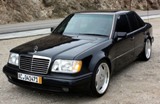
Five Sports Sedan's I'd Love to Own
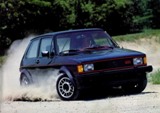
Hot Hatchbacks From the 1980's

Volvo 200 Series: An Unappriciated Classic
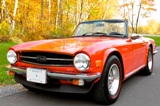
Triumph TR-6: Music to Anyone's Ears
Fifty Years of Mustang
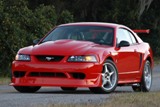
1999-2001 Ford Mustang SVT Cobra
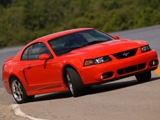
2003-2004 Ford Mustang SVT Cobra
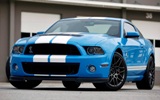
2010-2014 Ford Mustang Shelby GT500
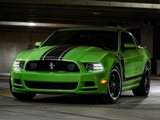
2012-2013 Ford Mustang Boss 302
Driven

Volvo 200 Series: An Unappriciated Classic

Triumph TR-6: Music to Anyone's Ears
1993 Nissan Skyline GT-s and GT-R Coupe


